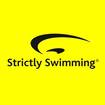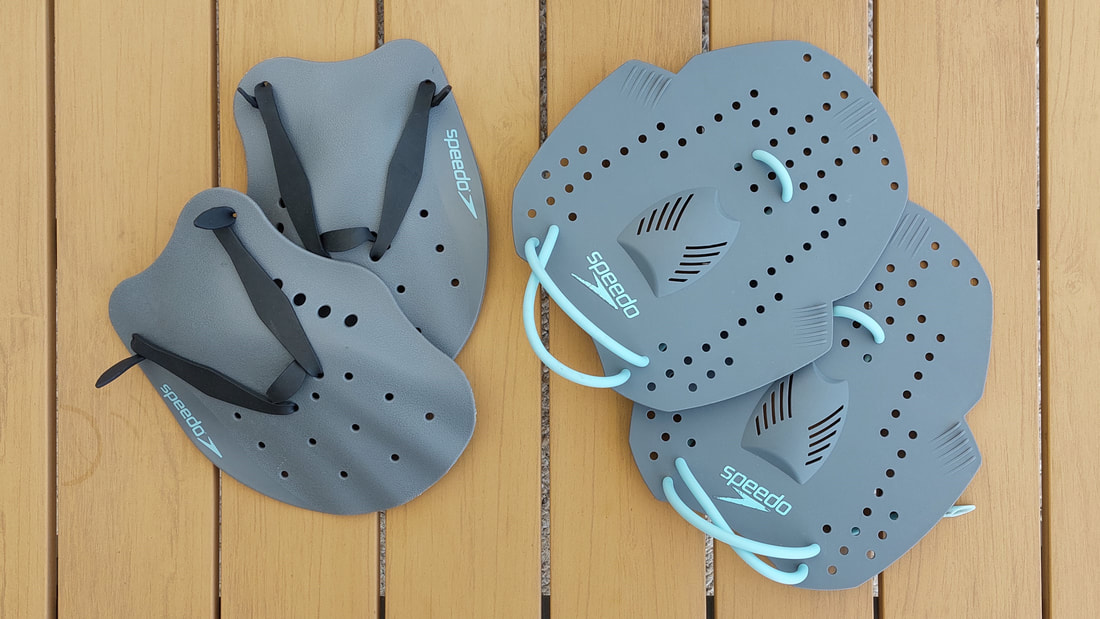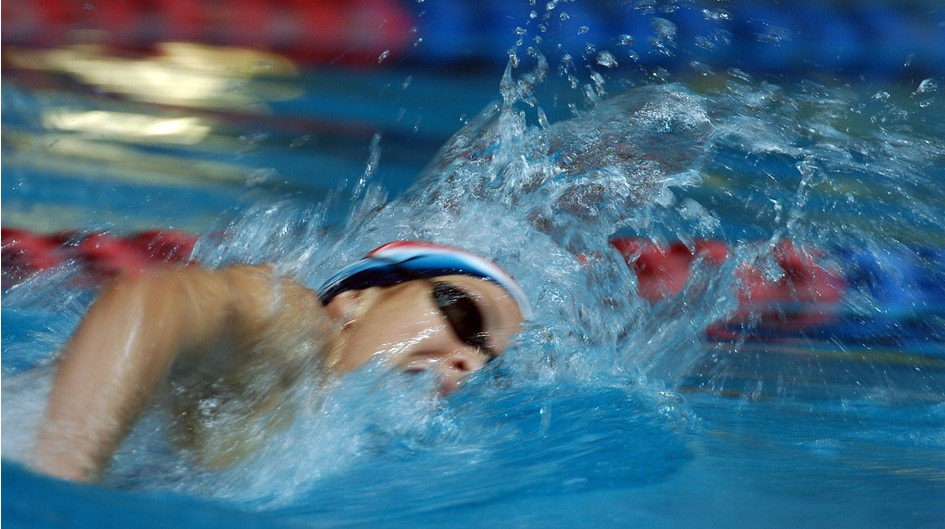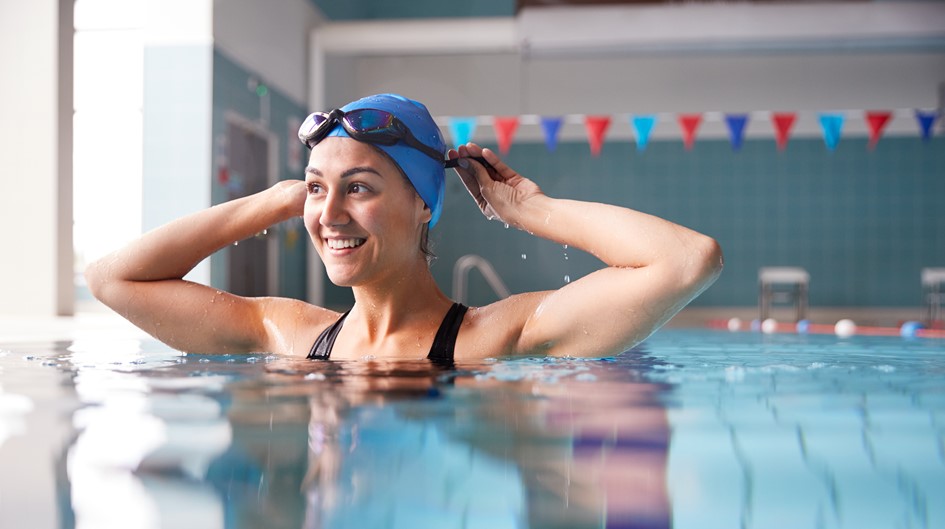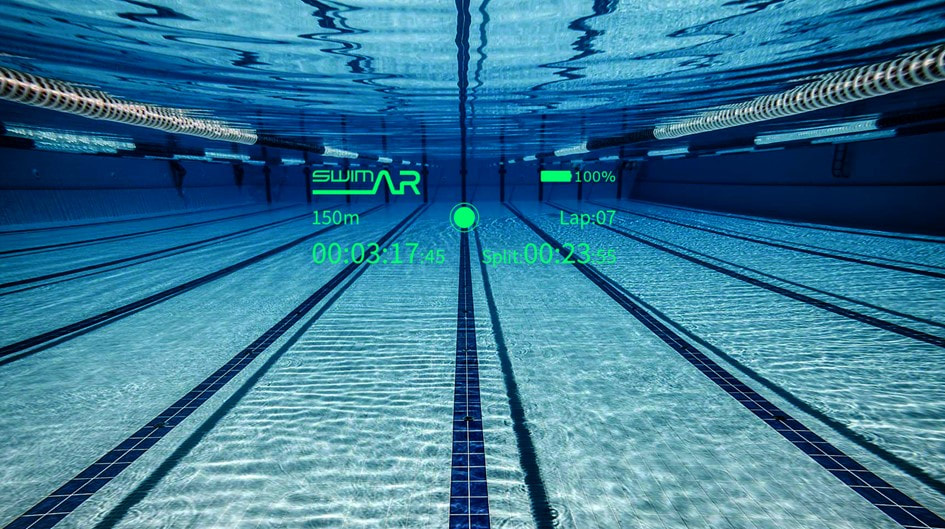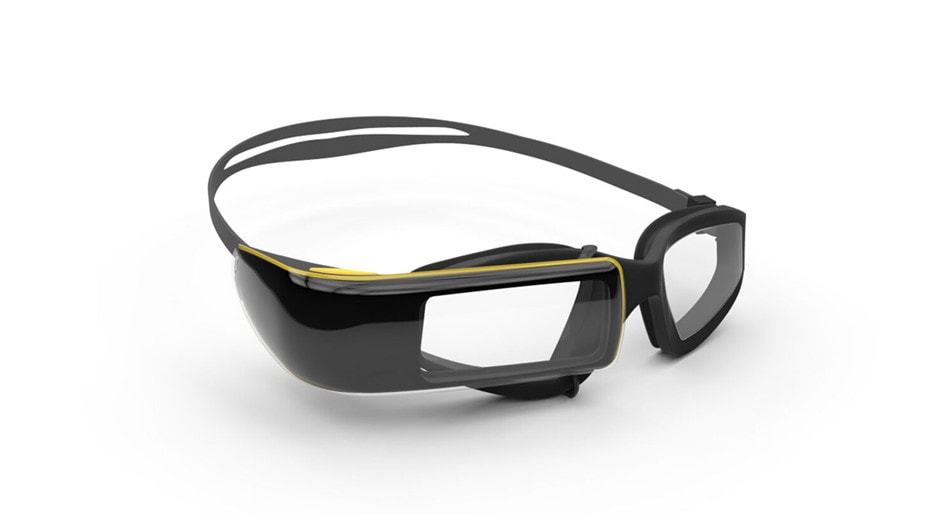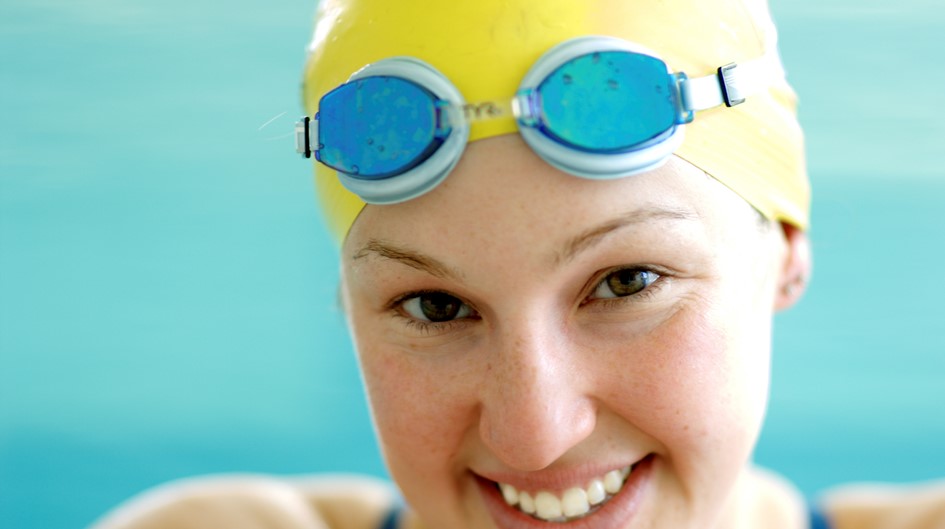|
Swimming is a highly technical sport that requires precise movements and efficient propulsion through the water. To enhance performance and build strength, swimmers often incorporate various training aids into their workouts. Hand paddles are one such tool that has gained popularity among swimmers of all levels. But how can you effectively incorporate them into your swimming training routine. These specialized paddles, typically made of plastic or fiberglass, are worn on the hands and increase resistance as swimmers pull through the water, thereby providing a challenging workout. Hand paddles come in various shapes and sizes, catering to swimmers of different skill levels and training objectives. The primary purpose of using hand paddles is to improve stroke mechanics. By amplifying the surface area of the hand, paddles encourage a more powerful catch and pull phase during the swim stroke. This increased resistance forces swimmers to engage more muscles, particularly the shoulders, back, and core, leading to improved strength and endurance over time. Additionally, hand paddles promote a heightened awareness of hand positioning and water feel, allowing swimmers to develop a more efficient and streamlined stroke technique. Hand paddles are versatile training aids suitable for swimmers of all levels, from beginners to competitive triathletes. Novice swimmers can benefit from using smaller-sized paddles to develop proper stroke mechanics and build strength gradually. Intermediate and advanced swimmers often utilize larger paddles to further enhance their stroke power and refine their technique. However, it's essential to exercise caution when incorporating hand paddles into training. Overuse or improper usage can lead to strain or injury, particularly in the shoulders and wrists. It is recommended to start with shorter distances and gradually increase intensity and duration as the swimmer adapts to the paddles. At Strictly Swimming London, we encourage our clients and triathletes to purchase some hand paddles, as we can incorporate them into your lessons. Benefits of Hand Paddles
Using Hand Paddles Effectively
In conclusion, hand paddles are a valuable tool in swim training, offering swimmers the opportunity to refine their technique, build strength, and enhance performance in the water. By incorporating hand paddles appropriately and progressively, swimmers can unlock their full potential and make significant strides toward their swimming goals. As always, please feel free to discuss these techniques with your Strictly Swimming London coach during your lessons. What are Swim Fins?
The use of Swim fins (also known as ‘flippers’) has increasingly become part of any swimmers training regime over the last couple of decades. If there is one item to purchase to help you with your swim training, it’d definitely a pair of Swim Fins! Wearing fins on your feet, allows you to propel yourself with far greater speed and power to your leg kick and also increases the fun of rocketing through the water. Integrating the use of swim fins into your training can help prefect many elements of your swimming stroke and also your overall technique (including the correct body position and ‘height’ in the water). We always use Swim Fins during our Strictly Swimming lessons in London, so please ask our coaches advice before splashing out on a pair. The Benefits of Swim Fins 1. Improves your kick technique Using swim fins will work your upward leg kick and downward leg kick by adding resistance to these movements. If your leg kick is the weakest part of your stroke, swim fins will increase the resistance of your kick on the water as you perform each movement. This added resistance will work your quad muscles (on the downward kick) and hamstrings (on the upward kick), making you move faster and more efficiently. Your leg kick will connect with the water on a much greater scale and you will find that your hips are no longer sinking. If you feel that you go nowhere with a kick board in your lessons or training, try using swim fins to create a narrow and fast flutter kick to propel you through the water. 2. Improves your overall stroke technique The extra propulsion and speed in the water created by your swim fins will allow you to focus and develop specific elements of your technique that you are concentrating on. This extra speed and stability will help you practice more advanced drills to a higher level and can target your technique with much more accuracy and ease. 3. Develops correct body position Many novice swimmers and triathletes find it difficult to maintain good height in the water (swimming as close to the water’s surface or above). Swimming with fins increases speed in the water which in turn increases a higher body position to the water surface. So you will feel like you are zooming across the surface of the pool as your swim fins teach you how to swim on top of the water. 4. Reduces stress on your shoulders Although swimming is a moderately low-impact sport, after a while in training, your shoulders may experience quite a bit of stress. The repetitive movements of each stroke can lead to shoulder aches or even damage if proper care is not performed during your workout. Swim fins lower the impact on your shoulders (during your workout and even during lessons) as your leg kick increases proportionally within the whole stroke. 5. Help increase strength and endurance As mentioned, swim fins alleviate stress on the shoulders and the arms which allows you to swim for longer periods of time, increasing your muscle strength and endurance in the process. Working the specific muscle groups of your legs, using swim fins is among one of the top ways in developing kick strength during your swimming. 6. Improves ankle flexibility Finally, using swim fins requires your ankle to move through a greater range of motion than you make regularly kick during your stroke. Some swimmers are naturally flexible in their ankle joint, while others may find this difficult to relax and stretch during the ‘flick’ of your foot when kicking. Swim fins reinforce proper kick mechanics, allowing you to develop ankle flexibility faster than training without fins. Types of Swim Fins
Overall swimming fast is much more fun, so why not mix up your training by including some training sets whilst wearing your swim fins. There are a number of different ways that you can vary your workout with fins, so let our Strictly Swimming coaches in London help you develop a new training regime in the water whilst using them! Buy some goggles that fit Your swimming goggles should be adjustable but also fit your face width and naturally fit comfortably in or around your eye socket. Remember that your goggles should be fitted pretty tightly to prevent water entering them (this tightness is something you will need to get used to). Your Strictly Swimming London coach can help you with your goggles at the start of your first lesson. Your goggles should be completely fixed on your face (and not move) even during a hard push off the swimming pool wall. Purchase some swimming fins Swim fins offer an array of benefits to the beginner to triathletes to competitive swimmers. Using flippers (fins) helps improve the power of the leg kick to support your stroke when concentrating on technique work in the water. Get the right swimming gear Buy practical gear that fits and not gear that only looks good. Tight fitting swimwear helps reduce drag in the water. The last thing you need is baggy and heavy swimwear that makes it harder to learn to swim as you move through the water. Wear a Swim Cap Wearing an inexpensive swim cap can help protect your hair in heavily chlorinated pools but also helps in keeping medium length and long hair away from your face whilst you try to master breathing techniques. A tight swimming cap will help you move easier through the water if you have long hair. Shaded Goggles for Outdoors If you goal is to do some open water swimming, consider getting some goggles with shaded lenses. They will act like regular sunglasses and protect your eyes from the sun and allow you to follow the direction that you are aiming for. Do you like the idea of tracking your swimming in real time? Would you like to see your swimming statistics during or after a workout or lesson? Well the newly designed AR googles (Augmented Reality) that have recently landed on the market will provide your stats during every workout and take your training to the next level. Augmented reality swimming goggles have been designed to help swimmers track their swim times, distances completed and lap splits (to the hundredth of a second) during any swimming workout. This data will also help your coach and teacher to monitor your performance. These goggles can offer you and your Strictly Swimming London coach immediate feedback when in the pool and we can analyse your data during your lesson. The sport of swimming has lacked behind other sports such as cycling and running in recent times (who have various gadgets at their disposal to monitor their stats for some time now). Whereas swimmers (during training and lessons) haven’t had gadgets to hand where they can use them in the water to record split times swum and monitor distances that have been achieved. Such an invention is exciting for the sport of swimming which remains the number one participation sport in the UK with over 2.5 million people swimming in pools each week, according to figures from Sport England recently. This figure increases more if you include open water swimming. There have been various smartwatches on the market for a while with limited functions. The Apple Watches Series 2 and beyond will calculate how many laps that you've swum or the stroke you've performed. Waterproof MP3 players and SwiMP3 players have provided underwater music. However, that’s really been about the level of functions available until now. These new goggle companies are claiming that they will revolutionize the way swimmers train. Types of AR Swimming Goggles
The Form Goggles display metrics that you need to see in the moment which allow you to take control of your swimming during training and lessons. Developed in collaboration with top competitive swimmers, these goggles allow you to monitor split times, interval times, rest times, total time swum, stroke rate, stroke count, distance per stroke, pace per 100, pace per 50, distance, length count and calories burned (which is impressive). The smart display is see through and is built right into the goggles lens, delivering metrics without obstructing your vision https://www.formswim.com/ The FORM Swim Goggles intelligently detect turns and rest—and give you relevant metrics each step of the way. They even allow you to customise your display and review your stats via their App. SwimAR is a holographic display for swimmers by attaching a lightweight, hydrodynamic and waterproof module to a regular pair of swimming goggles. This device includes an added extra GPS system for finding your way in open water. This module can be attached to various goggle styles with flexible straps. https://www.swimar.co.uk/ Overall Opinion If you want to compare your personal bests through your swim training and lessons, then investing in some Augmented Reality goggles is definitely for you! These state-of-the-art swimming goggles will allow you to adjust your stroke to the pace you need, increase your stroke length if you are starting to shorten through your workout and also allow you to stop guessing your pace. For those swimmers with poor eyesight who cannot see the pace clock on the poolside, then these goggles will be ground-breaking. Using AR goggles seems to eliminate pausing to check your lap times during your workout. The downfalls are that AR goggles are really meant for serious swimmers and secondly they seem not to be able to monitor kick sets at the moment (although we think the positives hugely out way the negatives). Be careful if you are swimming competitively as these goggles are designed to be used during training but not at a swim meet as they are not FINA approved (yet)! If you would like to use these goggles during your lesson with our London coaches, we will be able to analyse your stats and offer instant feedback on your split times and intensity performed during your swimming set. The Strictly Swimming London team are excited to see these new AR goggles (even though they are pricey) and really believe that they will be massively motivational to swimmers all over the world. There are so many brands of swimming goggles on the market nowadays, with a varying price range, but the best goggles are simply those that fit correctly and feel comfortable and stable on your face. You need to feel happy and confident that they will stay in place when swimming at your top speed. Many of the Strictly Swimming London coaching team have a high-level competitive swimming background and all will tell you how they had a favourite pair of goggles or ‘lucky goggles’ they felt helped them when racing (many of these goggles being the lowest price). So despite the price of the goggles you are trying on, always opt for those that fit the best and make your feel confident that they won’t bug you during your lessons, workouts and races. Getting the best fit with your swimming goggles Try on a few pair of swimming goggles to find a fit that suits you best. For some, children’s goggles may fit better than adult goggles. Hold the goggles to your face (without using the strap) and if you feel suction and they stay in place briefly, then they are most likely to be a good fit as you can feel a tight seal. If they fall off immediately, they won’t be a good fit and will hinder your swimming lessons and workouts. The main areas to check out when trying on a new pair of goggles are: Eye seal – After trying various pairs, opt for goggles that fit your eye socket size. With a good fitting pair of swimming goggles, you should feel even pressure around the eye sockets and seals the eyes well. Look at all eye socket types for men, women, all adults and even children’s goggles. Straps - The straps are used to keep your goggles in place but not to provide the seal. The strap should not be tightened so much that it makes the goggle uncomfortable and creates marks around your eyes, because it is too tight. When wearing a goggle with two straps, place the lower strap about eye level at the back of your head and position the other strap a couple of inches higher. This provides a secure fit and will help to prevent your goggles leaking or falling off when you dive into the water. Nose bridge – many goggles nowadays have an adjustable nose bridge to allow swimmers to personalise the fit and mould it to fit your face. Find a pair of goggles with a nose bridge that can be tightened or loosened to fit the with of your nose (without it affecting the placement of each goggle on your eye sockets). Pool Swimming or Open Water Swimming? If you are swimming in the sea or in open water, it is recommended that you opt for polarized swimming goggles. It is also important to find a pair of goggles which allow optimum peripheral vision when swimming in open water due to reduced visibility in unclear water. A wide medium to large frame will maximize your field of view in the open water, allowing you to ‘sight’ better when swimming in rough water. Swimming Goggles for Triathlon Whether you are contending with the glare of the sun, murky water or cloudy skies, it is worth spending some time thinking about your needs before you buy some goggles for your triathlon swim leg. Adult triathletes who opt for a full open-water mask will experience greater drag than a pair of small racing goggles. That may be true, but a small pair of goggles wouldn’t stand up well to a kick in the face at the start of a triathlon. A full wrap-around goggle is a common choice for open-water swimmers and triathletes, and there are definite benefits associated with the greater peripheral vision and more even distribution of pressure around the eyes through long swims. Goggles Keep Steaming Up Goggles fog up because warm, wet air, usually created from your body heat, condenses on the cooler-than-air lenses. However, if your goggles feature an anti-fog coating and still steam up, it could be their age. In some cases, with regular usage, goggles can out-live their anti-fog coating, depending on the method used to apply it during manufacture. If yours are fogging up and are old or well-used, it might be time to consider investing in a new pair. Avoid rubbing the lenses or touching them during your lessons and workouts, as this will start to remove the coating. Taking Care of Your Goggles Goggle maintenance is not an exact science but by following our hints and tips you should prolong the life of your goggles. All you need to do is wash the chlorinated water off your goggles after your lesson in warm water, air dry them rather than wiping them with a towel and store them carefully to avoid scratching the lenses. |
AUTHORPaul started competing in swimming from the age of 8 and eventually went on to represent his country all over the world. During his time at University, Paul specialised in Aquatics and the Biomechanics of Swimming and produced numerous theses on swimming performance. TOPICS
All
ARCHIVES
June 2024
|
Let's connect!
Copyright © 2024 Strictly Swimming

